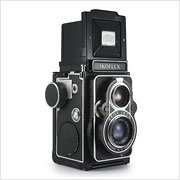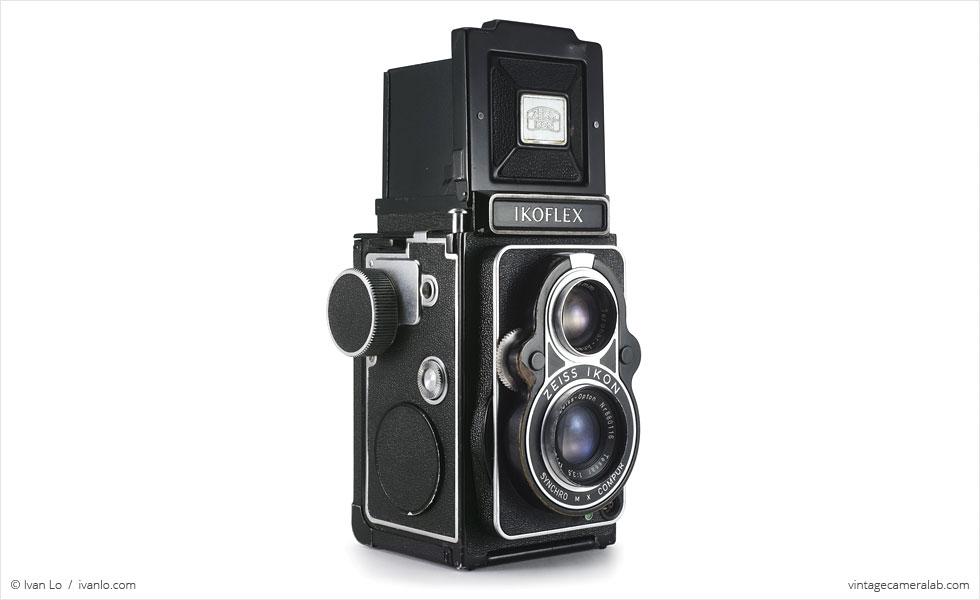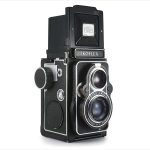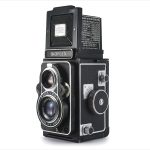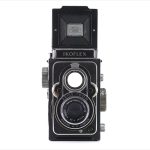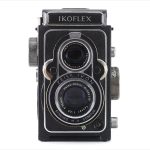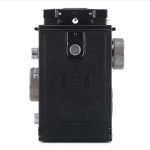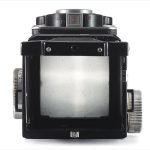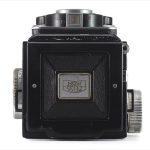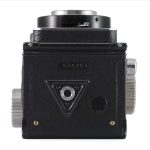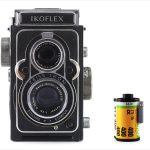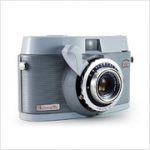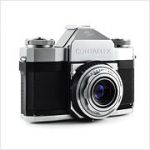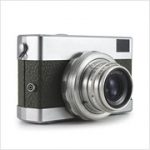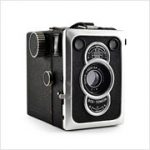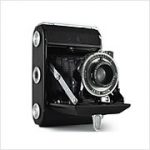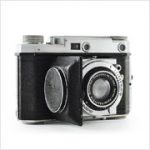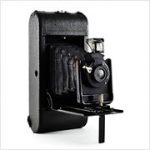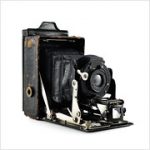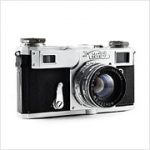Zeiss Ikon Ikoflex IIa (855/16) Specifications
| Manufacturer: | Zeiss Ikon AG |
| Origin: | West Germany |
| (modern day Germany) | |
| Made in: | Stuttgart, West Germany |
| (modern day Germany) | |
| Introduced: | 1953 |
| Type: | Twin Lens Reflex |
| Format: | 120 Film |
| Dimensions: | 10 x 14.2 x 9.7 cm |
| 10 x 20 x 9.7 cm (viewfinder open) |
Zeiss Ikon Ikoflex IIa (855/16) Overview
This Zeiss Ikon Ikoflex IIa, which was introduced in 1953, is the second of two mechanically equivalent but cosmetically different twin lens reflex cameras that share the exact same name and model number (855/16). The earlier Ikoflex IIa from 1950 featured a body which was a natural evolution of the original Ikoflex II while the later IIa has an original design that went on to become the foundation for the Zeiss Ikon Ikoflex Favorit, the final model in the storied Ikoflex family.
In order to use the Ikoflex IIa, the user must first open its viewfinder which can be done via the little silver button near the top of the camera’s back plate. Once the viewfinder’s spring-loaded panels are up, the viewfinder—which features a handy exposure chart—allows the user to compose by holding the camera at waist-level and looking down into it to see through the top lens: a Teronar-Anastigmat 75mm f/3.5. A hinged magnifying glass can be engaged for fine-tuning focus and the entire front panel of the viewfinder (the bit with the Zeiss Ikon logo) can be flipped up to create a simple optic-less viewfinder (typically referred to as a sports finder) when the user looks through the small square cutout on the back of the viewfinder assembly.
To focus the Ikoflex IIa’s twin lenses, there’s a knob on the user’s left-hand side of the camera between the two smaller film spool release pins. Atop the viewfinder lens is a tiny window that shows the current aperture and shutter speed settings which can be changed by adjusting the gears on either side of the lenses. The bottom lens—a Zeiss-Opton Tessar 75mm f/3.5 that does the actual picture-taking—is mated to a Synchro Compur shutter which is controlled by the threaded shutter button located at the base of the viewfinder on the user’s right-hand side. A flash sync socket is located just off the 4:30 position of the taking lens and has with two selectable modes: “M” for “medium time” which builds in a slight time delay for single use flash bulbs and “X” for “Xenon,” the gas used in electronic flash units which can fire instantaneously alongside the shutter.
Once an exposure is made, a knob on the user’s right-hand side of the camera readies the film for the next shot, cocks the shutter, and also advances the frame counter which is visible in the small circular window above the manual frame counter adjustment wheel. Apart from the viewfinder release button, the only thing of note on the back of the Ikoflex IIa is the round film door latch. The bottom of the camera is home to the red window and a standard tripod socket.
Despite the camera’s superb build quality and precision optics, Zeiss Ikon didn’t neglect user-friendliness. Case in point, this model features a “red-dot setting,” a combination of focus, aperture, and shutter speed settings that, when selected, essentially turns the Ikoflex into a simple snapshot camera for novice photographers. Simply dial in the numbers with a red dot next to it and you’re all set!
Apart from some brassing, various scratches and scuffs, and a dent on the viewfinder, my Ikoflex IIa is in very good condition. Although I have been watching various Zeiss TLRs for years, this camera was actually traded to me by a reader in exchange for some Vintage Camera Lab t-shirts. If you would like to do something like this, please contact me and we’ll sort something out.
Find your very own Zeiss Ikon Ikoflex IIa on eBay.
McKeown, James M. and Joan C. McKeown’s Price Guide to Antique and Classic Cameras, 2001-2002. (Grantsburg, WI, USA: Centennial Photo Service, 2001), p 720-721.
